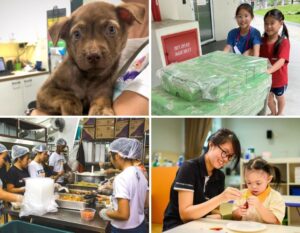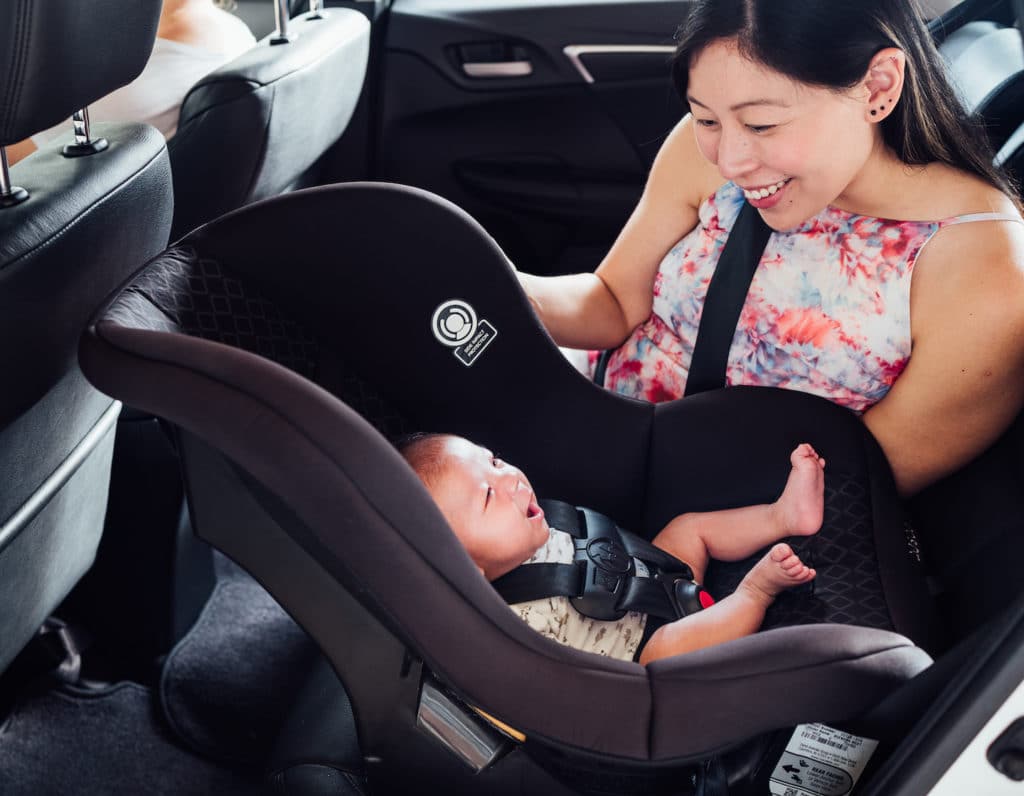
Everything you need to know about the rules on travelling in taxis or Grab cars with kids, to the safest car seats, best booster seats, and the safety restraints you need to keep your little ones safe while in a car, taxi or bus.
Whether you’re a first time parent or are just new to Singapore, there’s a lot to know about car seats and car safety here, particularly since so many people ride in taxis. Grab drivers are required to refuse passengers with children who don’t have booster seats (unless you book their family cars). And while buses accept open strollers – definitely high fives all round – there are times when you need to travel in taxis, both here and abroad, and you’ll need a good safety system that is portable and affordable.
What are the Singapore laws? Is it legal (or safe) to take a taxi without a safety restraint? And what equipment is practical and available in Singapore for when you are on the go with kids but have no car?
In Singapore, three times as many babies died in car accidents in 2014 in comparison to the US.* A recent study released by KKH found that of 2,468 road traffic injury patients seen in Singapore paediatric emergency departments, 51% of motor vehicle passengers were unrestrained at the time of the accident. This is shocking given how safe Singapore is perceived to be, and yet only 6% of children are placed in proper restraint seats. That means 94 per cent of children here are not safe in cars – whether babies are riding in arms or carriers rather than in car seats, young children are unbuckled and moving freely about the backseat of the car, or children are seated in the front seat of the car.
So how can we get our kids safe? We have done the legwork on all the Singapore rules, the best portable car seats and safety restraints from the Ridesafer Vest and the mifold to the Urban Kanga and Cosco Scenera NEXT. Plus all the rules on taxis (do you need your own booster, or don’t you?) so you can be confident you’ve got your kids strapped in for a safe ride.
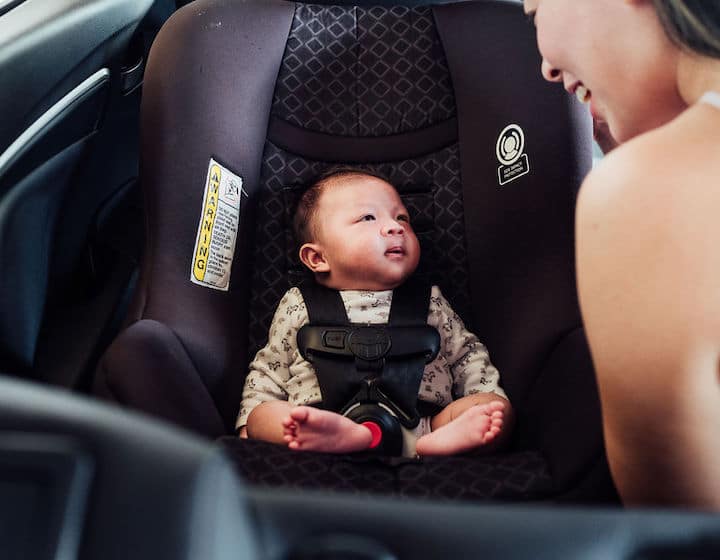
The Laws
According to Singapore’s Road Traffic Rules the law states that:
Anyone below the height of 1.35m will be required to be secured with a child restraint appropriate for a person of that height and weight. Those with a height of 1.35m and above, irrespective of their age, will be required to wear a seat belt. The penalty for failing to comply is a $120/- fine and 3 demerit points for the driver. Offenders may be charged in court. A first-time offender may be fined up to $1,000/- or jailed up to 3 months. Repeat offenders may be fined up to $2,000/- or jailed up to 6 months.
Taxis
Taxis will continue to be exempted from child safety seat requirements, however private hire cars such as Grab cars, are not. The law states that “Any person who contravenes rule … 8(1) [child restraints for persons below 1.35m] … shall be guilty of an offence and shall be liable on conviction to a fine not exceeding $1,000 or to imprisonment for a term not exceeding 3 months (a fine of $2,000 or imprisonment of 6 months for repeat offenders” Take heed because in the case of ridesharing services like Grab, the law states ‘any person’ rather than ‘the driver’ – this fine could potentially apply to parents as well.
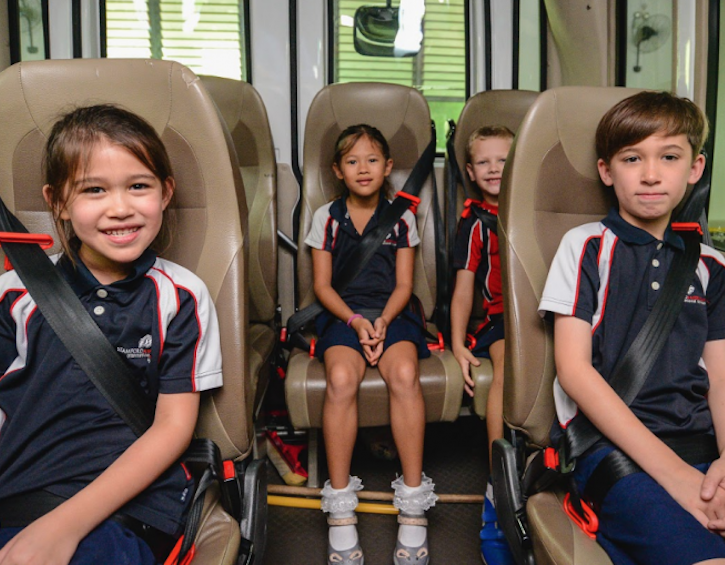
School Buses
From 1 January 2012, all school children and passengers traveling on board small school buses (15 or fewer seats) shall be required to use seat belts and children below 1.35m must wear approved and appropriate child restraints. This change recognises the important role of school bus conductors and attendants in ensuring the safety of school children on board and making sure that their seat belts are properly fastened.
Back Seats Only
Research has shown that children face a greater risk of injury when traveling in the front seat, so a child or person below 1.35m should only ride in the rear seats to minimise the risk of injury in the event of an accident. Anyone below the height of 1.35m who rides in the front passenger seat of a taxi will be required to use his/her own child restraint or booster seat to supplement the seat belt. Failing to do so could mean a composition fine of $120 and 3 demerit points (fine applicable to passengers as well).
Never Wear Your Baby in a Car
Tempted to strap your baby onto you in their carrier and then use a seatbelt? Don’t! According to popular car safety authority The Car Seat Lady, baby-wearing in cars is dangerous and completely ineffective – the force of a crash can cause babies to fly out of carriers (which themselves can even rip apart on impact), while in other cases whiplash can cause the parent’s head to strike baby with incredible force. It’s actually slightly better to strap a child into their own seat belt than to wear them or strap them into your lap. Far from ideal, just slightly less bad.
So what are the options if you want to travel safely in taxis?
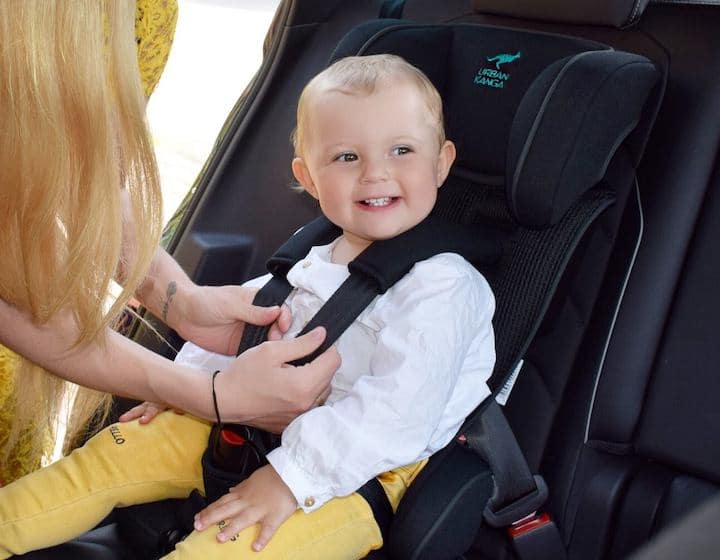
For kids 9 months old+
Urban Kanga ($289) is taking Singapore by storm. It’s a foldable, forward-facing car seat meeting European safety standards. It takes 60 seconds to install, weighs only 3kg and is suitable for children weighing 9-18kg (approximately 9 months old to 4 years old). (Also available on Mothercare)
For kids 1 years old+
Book a Grab Family 1-3 (extra $5 booking fee) which utilises the Urban Kanga.
Cosco Scenera NEXT ($239) is one of the most-recommended taxi-friendly car seats thanks to it being rear facing with a 5-point harness and Side Impact Protection. It’s a measly 3kg in weight so it’s very portable; this is the lightest seat on the market and it’s so easy to install in any Singaporean taxi, Uber or GrabCar (note – a seatbelt locking clip is essential in Singapore but needs to be purchased separately – Taxi Baby stock them). The Cosco Scenera NEXT easily fits three across in the back seat and it also fits on most strollers or can be easily carried with a shoulder strap. Last but never least, it is is the only car seat most children will need from birth (rear-facing 5-40 pounds/19” to 40”) until they’re ready for a booster seat at 4-7 years old (forward-facing 22-40 pounds (29” to 43”). Plus it is even certified for use on aircraft!
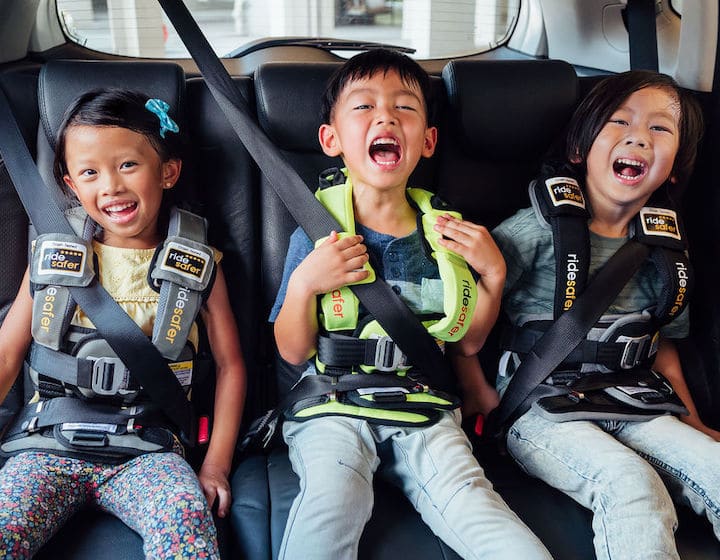
For kids 3 years old+
Ridesafer vest ($229) is a super lightweight vest that correctly positions a vehicle’s seatbelt over the child while keeping their centre of gravity low so as to improve crash dynamics. It’s super light (less than 700 grams) and enables parents to fit 3 kids across in a backseat provided you have shoulder seat belts. The Ridesafer vest also features in-build energy management which helps to dissipate crash forces in an accident across a greater area than just the adult seat belt (as with a conventional booster seat). The optional tether strap significantly reduces forward and side movement of your child’s head during an accident – thus lessening the risk of head injury. Plus the latest model Gen5 allows for increased airflow – perfect for Singapore’s weather. (Purchase from Taxi Baby, Pupsik Studio or Amazon.sg)
For kids 4 years old+
Trunki BoostApak ($119) is recommended for children under 135cm weighing between 15 and 36 kg (approx. 4–12 years). It’s also an ideal solution for sharing lifts and traveling in taxis. This nifty backpack is hand luggage-approved for flights and doubles up as a booster seat with plenty of space for toys and games – it’s a great one for long journeys. BoostApak is ECE44.04 approved for group 2 & 3, and certified to European Union safety standards. (Purchase from Mothercare or Amazon.sg)
The mifold Grab-and-Go Booster Seat ($49 – $99) is what you’ll get if you book a Grab Family car ($2 extra). It’s designed for kids aged from 4 years old until approximately 7 years old and is the most advanced, compact and portable booster seat in the world. 10 x smaller than the average booster seat, the advanced design of the mifold lowers the adult seat belt to fit your kid snugly shifting the belt from the stomach and neck, and making it a more comfortable and safe fit. (Purchase from Taxi Baby, Amazon.sg or Mothercare)
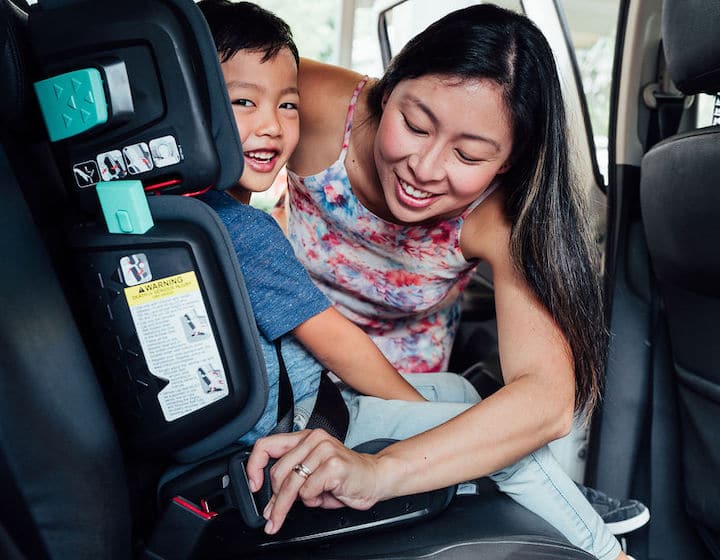
The hifold by mifold ($259), a nifty portable high backed booster seat, is available at Taxi Baby. With 243 individual settings, and certified for use in the US and Europe, this is one useful car seat! It folds down to three times smaller than a normal high-back booster, and comes with a useful shoulder strap. (Also available on Mothercare)
Another booster seat carried by Taxi Baby is Nachfolger‘s European-approved rear facing portable car seat for kids up to 18kg (the first in the world, as the Cosco Scenera NEXT is only US-approved). It’s inflatable with a hand pump or using a tyre pump at a petrol station so we imagine this will be great for overseas travel and car rentals, (but less convenient for taxis).
Car Seat Buy Guide: Cheat Sheet
– Britax Two Way Elite an extended rear facing car seat for kids up to 25kg, it can fit any car (even a porche 911!)
– BeSafe iZi Go Modular X1 i-Size infant seat with excellent safety credentials
– BeSafe iZi Up X3 Fix, excellent high backed booster seat which uses ISOfix to keep the booster in place
– BeSafe iZi Modular i-Size
– BeSafe iZi Flex FIX i-Size booster seat
– BeSafe iZi Modular i-Size Base
Things to Keep in Mind When Selecting a Car Seat
– Aim to purchase a 5-point harness seat rather than a 3-point harness seat; they’re much more secure, Taxi Baby, Mothercare, and Amazon.sg have a good range.
– Recent guidelines out of KKH recommend children should ride rear facing until at least two years old, but ideally past their fourth birthday. Although it is not required by law, rear facing in the back seat is still the safest way for babies and kids to travel. If you have your own car and your child has reached the rear facing height or weight limit of your particular car seat, consider moving to an extended rear facing car seat such as the Britax Two Way Elite.
– Bear in mind your baby’s size, how often you’ll be carrying their car seat around (an extra 2 or 3 pounds can make all the difference when schlepping seats to and from taxi cabs!), and whether you’ll need an adapter to make your car seat compatible with your stroller or pram. Taxi Baby can help you choose the right seat with a virtual micro consult.
– If you have a car, find out if it has Isofix (European) also known as LATCH (USA). It’s not inherently safer than a seat belt installation, but it is often simpler and therefore reduces risk of installing the car seat incorrectly. Also once the child reaches 18kg (for the vast majority of car seats) ISOfix can no longer be used and you should switch to a seat with a seat belt installation.
– We know car seats can be eye-poppingly expensive, but resist the urge to purchase a second-hand car seat. You never know what damage it has sustained, and whether that could put your baby in danger.
– Make sure all of your baby’s caregivers are able to securely install their car seat in taxis for when you’re not around; it’s worth practicing until everyone’s comfortable with the process.
No matter how short the trip, always use a car seat or safety restraint, mama!






 View All
View All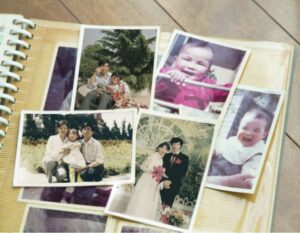




 View All
View All










 View All
View All


